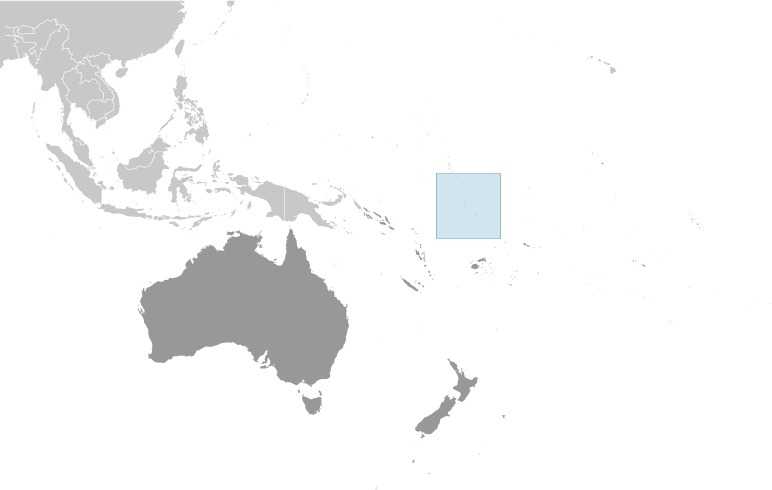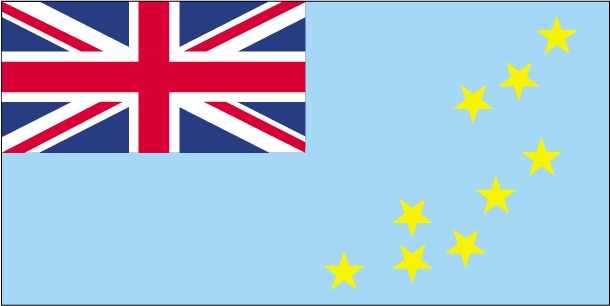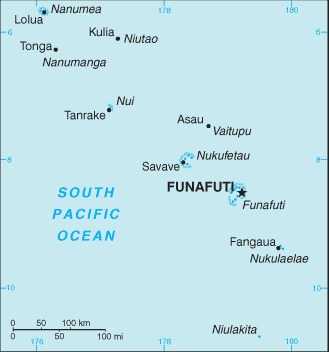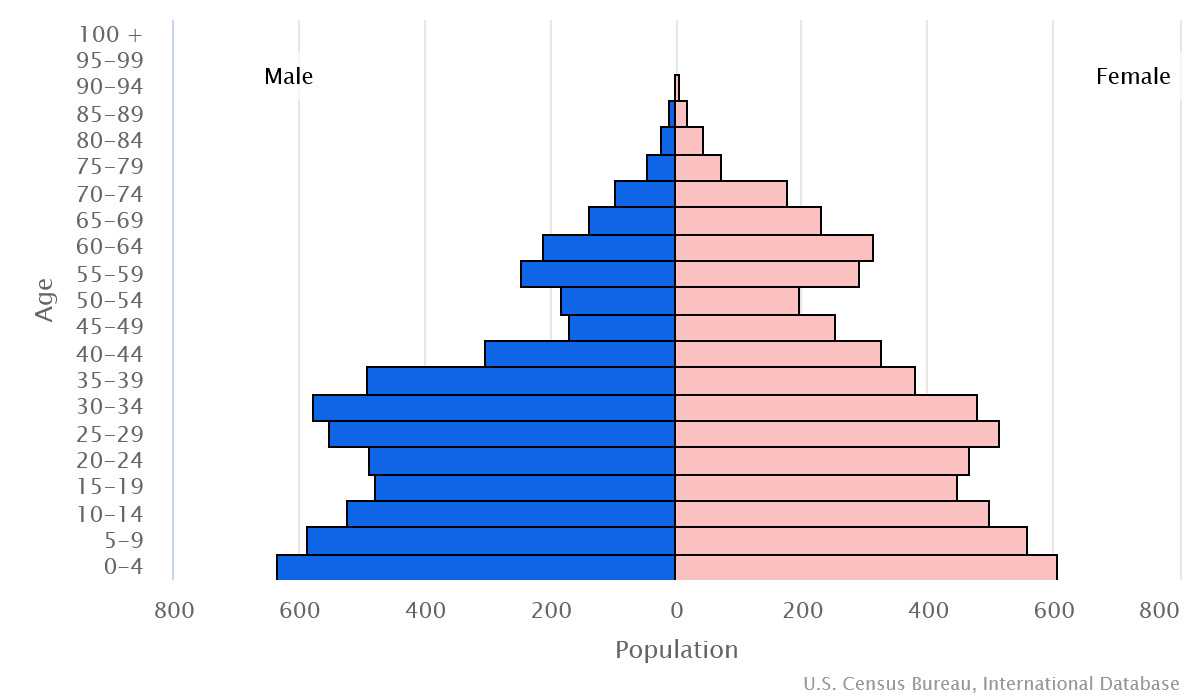Introduction
Background
In 1974, ethnic differences within the British colony of the Gilbert and Ellice Islands caused the Polynesians of the Ellice Islands to vote for separation from the Micronesians of the Gilbert Islands. The following year, the Ellice Islands became the separate British colony of Tuvalu. Independence was granted in 1978.
Geography
Area
total: 26 sq km
land: 26 sq km
water: 0 sq km
Climate
tropical; moderated by easterly trade winds (March to November); westerly gales and heavy rain (November to March)
Natural resources
fish, coconut (copra)
People and Society
Population
total: 11,733
male: 5,816
female: 5,917 (2024 est.)
Ethnic groups
Tuvaluan 97%, Tuvaluan/I-Kiribati 1.6%, Tuvaluan/other 0.8%, other 0.6% (2017 est.)
Languages
Tuvaluan (official), English (official), Samoan, Kiribati (on the island of Nui)
Religions
Protestant 92.7% (Congregational Christian Church of Tuvalu 85.9%, Brethren 2.8%, Seventh Day Adventist 2.5%, Assemblies of God 1.5%), Baha'i 1.5%, Jehovah's Witness 1.5%, other 3.9%, none or refused 0.4% (2017 est.)
Population growth rate
0.78% (2024 est.)
Government
Government type
parliamentary democracy under a constitutional monarchy; a Commonwealth realm
Capital
name: Funafuti; note - the capital is an atoll of some 29 islets; administrative offices are in Vaiaku Village on Fongafale Islet
Executive branch
chief of state: King CHARLES III (since 8 September 2022); represented by Governor General Tofiga Vaevalu FALANI (since 29 August 2021)
head of government: Prime Minister Feleti Penitala TEO (since 27 February 2024)
Legislative branch
description: unicameral House of Assembly or Fale I Fono (16 seats; members directly elected in single- and multi-seat constituencies by simple majority vote to serve 4-year terms)
Economy
Economic overview
upper middle-income Pacific island economy; extremely environmentally fragile; currency pegged to Australian dollar; large international aid recipient; subsistence agrarian sector; Te Kakeega sustainable development; domain name licensing incomes
Real GDP (purchasing power parity)
$51.937 million (2022 est.)
$51.588 million (2021 est.)
$50.674 million (2020 est.)
Real GDP per capita
$4,600 (2022 est.)
$4,600 (2021 est.)
$4,600 (2020 est.)
Agricultural products
coconuts, vegetables, tropical fruits, bananas, root vegetables, pork, chicken, eggs, pork fat, pork offal (2022)
Industries
fishing
Exports
$2.232 million (2022 est.)
$2.745 million (2021 est.)
$3.089 million (2020 est.)
Exports - partners
Thailand 69%, Croatia 21%, Philippines 4%, South Korea 2%, Japan 1% (2022)
Exports - commodities
fish, ships, computers, integrated circuits, nitrile compounds (2022)
Imports
$57.388 million (2022 est.)
$63.962 million (2021 est.)
$56.947 million (2020 est.)
Imports - partners
China 34%, Japan 27%, Fiji 20%, NZ 5%, Australia 5% (2022)
Imports - commodities
ships, refined petroleum, iron structures, engine parts, plastic products (2022)
Exchange rates
Tuvaluan dollars or Australian dollars (AUD) per US dollar -
Exchange rates:
1.442 (2022 est.)
1.331 (2021 est.)
1.453 (2020 est.)
1.439 (2019 est.)
1.338 (2018 est.)
Page last updated: Wednesday, May 15, 2024




